- Home
- H. Rider Haggard
King Solomon's Mines (Barnes & Noble Classics Series) Page 29
King Solomon's Mines (Barnes & Noble Classics Series) Read online
Page 29
Film
More than thirty films have been made from the works of H. Rider Haggard, including six versions of King Solomon’s Mines, two of Allan Quatermain, and twelve of She. The 1937 King Solomon’s Mines, directed by Robert Stevenson, cast African-American screen and theater legend Paul Robeson as Umbopo. The special effects, especially the bubbling lava, are impressive for this early film, which also includes excellent fight scenes. As with most film adaptations of the book, this version also inserts a white female love interest. Sir Cedric Hardwicke plays Allan Quatermain, Robert Adams is King Twala, and John Loder portrays Sir Henry Curtis.
A 1950 remake of King Solomon’s Mines by MGM, directed by Compton Bennett and Andrew Morton, is the first color adaptation of Haggard’s novel. Stewart Granger and Deborah Kerr play Quatermain and Elizabeth Curtis, a wealthy Englishwoman whose husband has disappeared while searching for African diamond mines. The film earned three Oscar nominations and won two awards, including Best Cinematography. More recently, King Solomon’s Mines (2004) was revised as a television miniseries starring Patrick Swayze and Alison Doody.
The best-known films inspired by King Solomon’s Mines are those of the Indiana Jones trilogy, co-written by George Lucas and directed by Steven Spielberg. Allan Quatermain is clearly the prototype for Harrison Ford’s Indiana Jones, the swaggering, khaki-clad explorer in the broad-brim hat. The first film, Raiders of the Lost Ark (1981), introduces Indy, a professor and archaeologist who leaves the university to try to prevent the Nazis from obtaining the Ark of the Covenant, an ancient artifact that would allow the Nazis to raise an invincible army. Several tricks seem cribbed from the 1950 version of King Solomon’s Mines, including the use of a falling boulder to block the mouth of a cave. The movie then cycles through multiple action-adventure situations: booby traps, snake pits, duels, chase scenes, and explosions. Raiders of the Lost Ark won four Academy Awards and sparked two less successful adaptations of Haggard’s work, a 1985 version of King Solomon’s Mines and Allan Quatermain and the Lost City of Gold (1987), both starring Richard Chamberlain and Sharon Stone.
Indiana Jones and the Temple of Doom (1984) has an occult twist, with many scenes that seem inspired by a 1935 film version of She. Kate Capshaw plays Willie, the love interest who constantly bickers with Indy. Jonathan Ke Quan plays Short Round, Indy’s tiny Asian sidekick who accompanies Indy as he attempts to wrest five mystical gems from the underground caves of the Kali-worshiping Thuggee cult. Gruesome incidents abound, including a feast of monkey brains and a priest ripping the heart out of a living human sacrifice.
Sean Connery—who is Allan Quatermain in the 2003 film version of The League of Extraordinary Gentlemen—plays Indy’s father, Henry Jones, in Indiana Jones and the Last Crusade (1989), a prequel to the first two Indiana Jones films. Kidnappers abduct the elder Jones, a medievalist who knows the location of the Holy Grail, the cup used by Jesus at the Last Supper that is purported to grant eternal life. Indy embarks on a search for both his father and the Holy Grail, encountering tanks, zeppelins, and biplanes along the way. The film’s opening sequence—featuring a twelve-year-old Indiana Jones, played by River Phoenix—reveals the origins of the scar on Indy’s chin, his signature hat, and his fear of snakes.
Comments & Questions
In this section, we aim to provide the reader with an array of perspectives on the text, as well as questions that challenge those perspectives. The commentary has been culled from sources as diverse as reviews contemporaneous with the work, letters written by the author, literary criticism of later generations, and appreciations written throughout the work’s history. Following the commentary, a series of questions seeks to filter H. Rider Haggard’s King Solomon’s Mines through a variety of points of view and bring about a richer understanding of this enduring work.
Comments
THE SPECTATOR
There can be no doubt that it is more difficult for the novelist of today to write a fresh and novel book of adventure than it was for his predecessors. The possible combinations of human life are in theory infinite, but the practical and probable are limited. Mr. Haggard’s main idea is one of these; for treasures have doubtless often been buried, and sometimes been found. But it is not novel. It has been used before, and pretty frequently; and used, too, in something of the same way that Mr. Haggard uses it. The frontispiece, with its mysterious markings, which is, we are told, the map of the way which a discoverer must travel, reminds us at once of the paper by which, in the “Gold-Bug” of Poe, the whereabouts of the buccaneer’s buried store of gold is identified. But Mr. Haggard’s invention is not at fault, and enables him to invest the central incident of his story with a certain weird originality which takes away all idea from the reader that he has been reading the same things before. It was a happy thought, in the first place, to make the treasure King Solomon’s. That is a name to conjure with as well in the West as in the East; and though we do not remember that diamonds figure in the Scripture catalogue of that potentate’s wealth, we are ready to believe that his treasury was rich beyond the dreams of avarice. It may even be said that the Scriptural associations of the name give a certain verisimilitude to the story, something in the same way in which the sailor’s introduction of Pharaoh’s chariot-wheels did to his yarn about the Red Sea. But there is more than this. It is an absolute stroke of genius when, in the ice-cavern, the discoverers find frozen into permanence the actual form of the old Portuguese adventurer of three hundred years before, and can even trace—so unchanged is the figure—the very wound in his arm from which he drew the blood wherewith he was to trace the map that was to guide some more fortunate adventurer. We felt when we reached that point that we were in the hands of a story-teller of no common powers; nor did the rest of the narrative, so skilfully and so high is the interest piled up, at all disappoint our expectations. The descriptions of battles do not easily admit of striking variations; yet no one will hesitate to allow this merit to the great fight between King Twala and King Ignosi, with the forlorn-hope of the Greys, who go into battle two thousand strong and come out with sixty, and the truly Homeric duel between King Twala and Sir Henry Curtis. It reeks, perhaps, a little too much of blood, but it is as effective a piece of writing as we have seen for a long time. The final scene in the cave, too, is very thrilling, the apparent hopelessness of the situation and the final escape being equally well managed.
—November 7, 1885
THE NATION
‘King Solomon’s Mines’ is a capital boy’s books, to which the purely fabulous foundation is no drawback. The marvellous adventures of Captain Good and his friends in the land that lay beyond the “Suliman Mountains” appeal, through devices familiar and novel, to the healthy boy’s ardor for fighting savages and coming off victorious, with the spoils of Golconda to boot.
—February 4, 1886
FORTNIGHTLY REVIEW
Mr. Haggard, in dedicating his novel of Allan Quatermain to his son, expresses the hope that he and other boys may find in it something that will help them to “attain to the state and dignity of English gentlemen.” That there is anything in the temper and tendency of Mr. Haggard’s books positively inimical to the pursuit of such an ideal we do not go so far as roundly to assert....
We may observe that the repugnance inspired by the details of Mr. Haggard’s murdering and massacring passages is sometimes still further aggravated by a tone of levity and even facetiousness accompanying the ghastly recital. One of his characters, a great amateur in homicide, with a hundred murders on his hands, deprecates some modes of killing a man as being not sufficiently “sportsmanlike.” This person’s favourite method is then circumstantially described, with a certain gusto suggestive of admiration—the admirer being Allan Quatermain, the autobiographic hero of two of the novels. For our own part, we are not so sensitive to the humorous side of carnage as Mr. Haggard appears to be, and we confess we find in it little to amuse....
[King Solomon’s Mines] exhibits some of Mr. Haggard�
��s choicest flowers of humour. Captain Good is caught by a party of savages at a time when he happens to be divested of his nether garment, and to keep up the first impression thus produced upon their untutored minds, he goes for several days without that article of clothing. This incident, amplified by various detail, is quite the strong feature and pivot of interest throughout several chapters, Mr. Haggard being evidently delighted with such fair fruit of his humorous invention. We are sure it is meant for humour; not, indeed, because we ourselves find anything very amusing in it, but because we know of nothing else that it can be meant for. Though it affects us rather sadly, we think it can hardly be intended as an experiment in pathos....
If it suited us to condescend to such humble particularities, we could produce from Mr. Haggard’s writings an array of sentences betokening an ignorance of the principles of syntax which might discredit any schoolboy. We care not to pursue such small game. For after all, individual solecisms sink into insignificance beside the collective folly and futility of these books. As the world is said to be wiser than its wisest man, so Mr. Haggard’s writings in their totality are worse than the worst things which they contain.
We have spoken with a degree of severity which will perhaps be attributed to private animus. We not only disclaim any such motive, we go farther, and do not hesitate to say that it is to the very fact of the utter absence of all personal considerations that our severity is due. The intrusion of such considerations would have brought human compunctions and relentings—would have begotten an unwillingness to deliver the maximum sentence which we believe such eminent offenses against good taste and good sense demand. It is only by rigidly shutting our eyes to everything but the general and public aspect of the case that we are enabled to go through the performance of such an unpleasant judicial duty. It is not that we grudge Mr. Haggard his undeserved success, but that we grudge the comparative neglect of meritorious fiction which the rage for meretricious fiction implies. We believe Mr. Haggard’s own inmost literary conscience will ratify our pronouncement. He is a clever man, well able to take the measure of his own charlatanry—very likely the last person in the world to mistake his own charlatanry for genius. He is a clever man, for to gauge public taste is not done by a sort of fluke, but argues very considerable if not always scrupulous talents; and he has accurately gauged the taste of a section of the reading public, which the triumph of his experiment proves to be a large section. But that taste—the taste for such an ill-compounded mélange of the sham-real and the sham-romantic—is a deplorable symptom. There is among the very poor in our large cities a class of persons who nightly resort to the gin-shop to purchase a mixture of every known liquor, the heterogeneous rinsings of a hundred glasses. The flavour of this unnameable beverage defies imagination, but the liquor has for its lovers one transcendent virtue—it distances all rivalry in the work of procuring swift and thorough inebriation. Its devotees would not thank you for a bottle of the finest Château Yquem, when the great end and aim of drinking—the being made drunk—can be reached by such an infinitely readier agency. The taste for novels like Mr. Rider Haggard’s is quite as truly the craving for coarse and violent intoxicants because they coarsely and violently intoxicate. But the victims of this thirst are without the excuse which the indigent topers to whom we liken them may plead. The poor tippler might say that he bought his unutterable beverage because he could not afford a better. But the noblest vintages of literature may be purchased as cheaply as their vilest substitutes. When we have abundance of exquisite grapes in our vineyards, is it not almost incredible that persons who pretend to some connoisseurship should be content to besot themselves with a thick, raw concoction, destitute of fragrance, destitute of sparkle, destitute of everything but the power to induce a crude inebriety of mind and a morbid state of the intellectual peptics? It is indeed almost incredible, but the pity of it is, it is true.
—September 1, 1888
JAMES KENNETH STEPHEN
Will there never come a season
Which shall rid us from the curse
Of a prose which knows no reason
And an unmelodious verse;
When the world shall cease to wonder
At the genius of an Ass,
And a boy’s eccentric blunder
Shall not bring success to pass;
When mankind shall be delivered
From the clash of magazines,
And the inkstand shall be shivered
Into countless smithereens:
When there stands a muzzled stripling,
Mute, beside a muzzled bore:
When the Rudyards cease from kipling,
And the Haggards Ride no more.
—from “To R. K.” (1891)
MORTON NORTON COHEN
Haggard adds to the impact of his adventures by putting them in the form of memoirs; by writing errors into the text so that he, as editor, may correct them in footnotes; by introducing a mass of meticulous detail in describing far-away places, the people who inhabit them, the costumes they wear, even the utensils they eat with. The formula is a psychological powerhouse, and in Haggard’s hands it seldom fails, no matter how steep his tale or how flat his minor characters, to draw the reader into a strange and distant world.
—from Rider Haggard: His Life and Works (1960)
C. S. LEWIS
The real defects of Haggard are two. First, he can’t write. Or rather (I learn from Mr. Cohen) won’t. Won’t be bothered. Hence the clichés, jocosities, frothy eloquence. When he speaks through the mouth of Quatermain he makes some play with the unliterary character of the simple hunter. It never dawned on him that what he wrote in his own person was a great deal worse—‘literary’ in the most damning sense of the word.
Secondly, the intellectual defects.... Though Haggard had sense, he was ludicrously unaware of his limitations.
—from On Stories and Other Essays on Literature (1966)
Questions
1. Does King Solomon’s Mines appeal to anything beyond the perpetual male adolescent that seems to be lodged somewhere within all of us?
2. What is an adventure? Why do we want to have one (in our imaginations if not in the flesh)?
3. Would King Solomon’s Mines be a better novel if a feisty and beautiful woman had been a participant in the adventures?
4. It is no longer common for adventure novelists to set their fictions in Africa. Any ideas about why?
5. In the treatment of Africans in the novel, is there anything beyond the old racist stereotypes?
6. What would you say has kept this novel popular, widely read and translated, and often imitated for more than 100 years?
For Further Reading
Editions of Haggard’s Works
The Annotated “She”: A Critical Edition of H. Rider Haggard’s Victorian Romance. Edited, with an introduction and notes, by Norman Etherington. Bloomington: Indiana University Press, 1991. An expert on Haggard provides much helpful documentation.
Diary of an African Journey: The Return of Rider Haggard. Edited, with an introduction and notes, by Stephen Coan. New York: New York University Press, 2001. A perspicacious look at the latest views on Haggard.
King Solomon’s Mines. Edited, with an introduction, by Dennis Butts. Oxford: Oxford University Press, 1989. Good, succinct notes.
King Solomon’s Mines. Edited by James Danly. Introduction by Alexandra Fuller. New York: Modern Library, 2002. Extensive notes.
King Solomon’s Mines. Edited by Gerald Monsman. Peterborough, Ontario: Broadview Press, 2002. An intelligent workbook format with additional texts relating to the novel.
The Private Diaries of Sir H. Rider Haggard, 1914-1925. Edited by D. S. Higgins. London: Cassell, 1980.
Biographical Studies
Cohen, Morton Norton. Rider Haggard: His Life and Work. Second edition. London: Macmillan, 1968. The standard biography, written with great affection for Haggard.
Etherington, Norman. Rider Haggard. Boston: Twayne Publishers
, 1984. A useful summary.
Haggard, H. Rider. The Days of My Life: An Autobiography. Edited by C. J. Longman. London and New York: Longmans, Green, 1926. Haggard’s own view, which is surprisingly reliable.
Haggard, Lilias Rider. The Cloak That I Left: A Biography of the Author Henry Rider Haggard, K.B.I., by His Daughter Lilias Rider Haggard. London: Hodder and Stoughton, 1951. The view of Haggard’s daughter, an essential source for all biographers.
Manthorpe, Victoria. Children of the Empire: The Victorian Haggards. London: Victor Gollancz, 1996. More on Haggard’s family circle.
Pocock, Tom. Rider Haggard and the Lost Empire. London: Weidenfeld and Nicolson, 1993. An enthusiastic look at Haggard and his times.
Criticism
Chrisman, Laura. Rereading the Imperial Romance: British Imperialism and South African Resistance in Haggard, Schreiner, and Plaatje. Oxford: Clarendon Press, 2000. A useful comparative study.
Fraser, Robert. Victorian Quest Romance: Stevenson, Haggard, Kipling, and Conan Doyle. Plymouth, UK: Northcote House, in association with the British Council, 1998. Haggard among his literary friends and competitors.

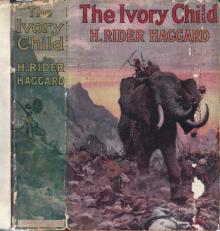 The Ivory Child
The Ivory Child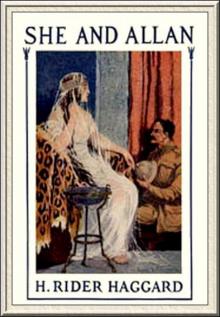 She and Allan
She and Allan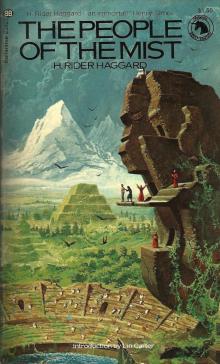 The People of the Mist
The People of the Mist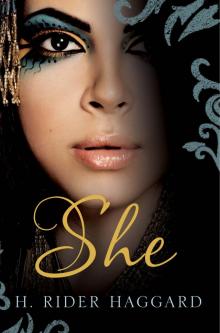 She
She Morning Star
Morning Star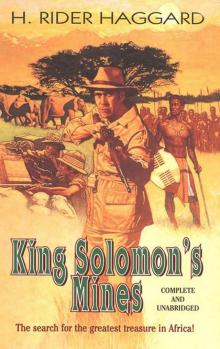 King Solomon's Mines
King Solomon's Mines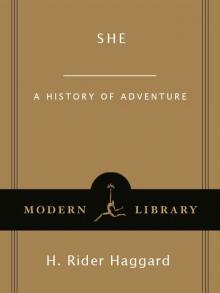 She: A History of Adventure
She: A History of Adventure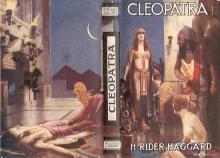 Cleopatra
Cleopatra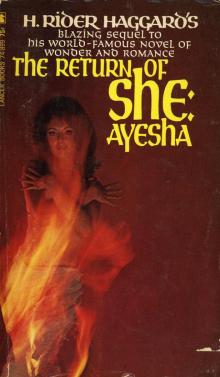 Ayesha, the Return of She
Ayesha, the Return of She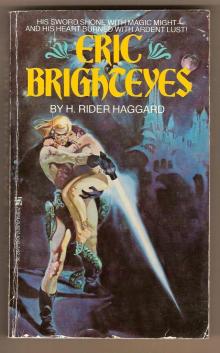 Eric Brighteyes
Eric Brighteyes Red Eve
Red Eve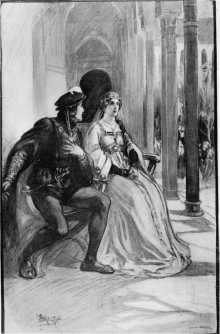 Fair Margaret
Fair Margaret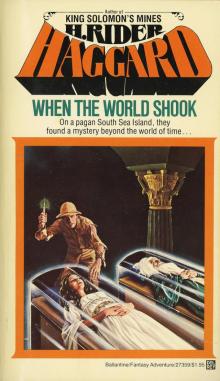 When the World Shook
When the World Shook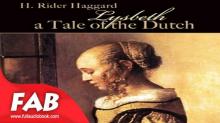 Lysbeth, a Tale of the Dutch
Lysbeth, a Tale of the Dutch Moon of Israel: A Tale of the Exodus
Moon of Israel: A Tale of the Exodus Long Odds
Long Odds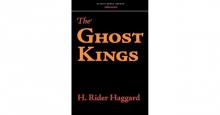 The Ghost Kings
The Ghost Kings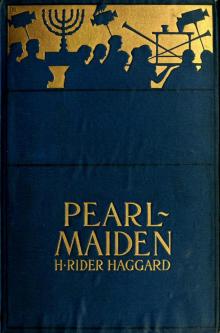 Pearl-Maiden: A Tale of the Fall of Jerusalem
Pearl-Maiden: A Tale of the Fall of Jerusalem Allan and the Holy Flower
Allan and the Holy Flower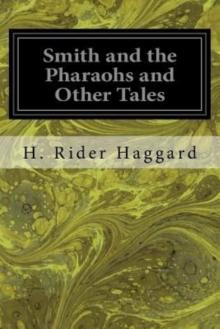 Smith and the Pharaohs, and other Tales
Smith and the Pharaohs, and other Tales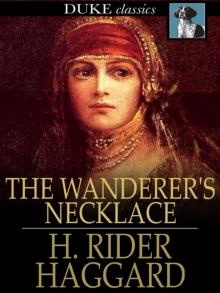 The Wanderer's Necklace
The Wanderer's Necklace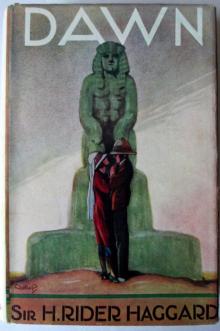 Dawn
Dawn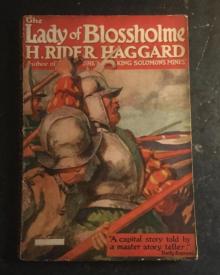 The Lady of Blossholme
The Lady of Blossholme Stella Fregelius: A Tale of Three Destinies
Stella Fregelius: A Tale of Three Destinies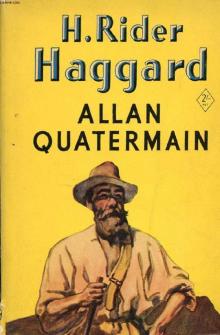 Allan Quatermain
Allan Quatermain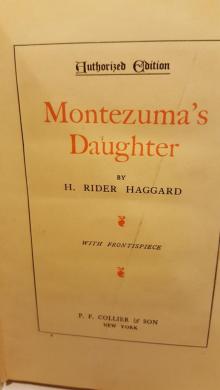 Montezuma's Daughter
Montezuma's Daughter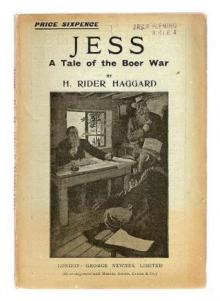 Jess
Jess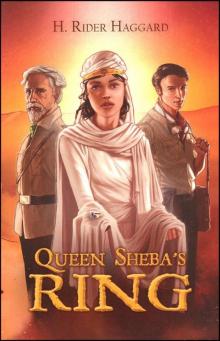 The Brethren
The Brethren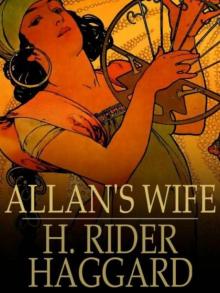 Allan's Wife
Allan's Wife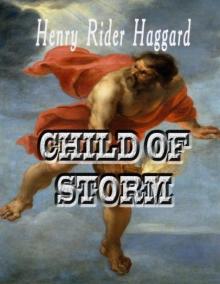 Child of Storm
Child of Storm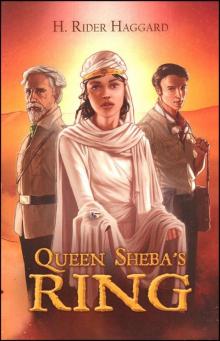 Queen Sheba's Ring
Queen Sheba's Ring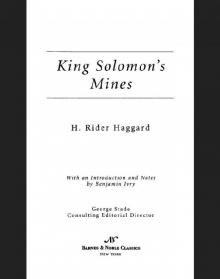 King Solomon's Mines (Barnes & Noble Classics Series)
King Solomon's Mines (Barnes & Noble Classics Series)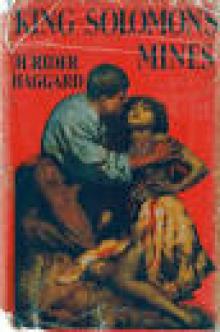 Complete Allan Quatermain Omnibus - Volumes 1 - 10
Complete Allan Quatermain Omnibus - Volumes 1 - 10